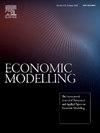中国上市公司财务困境预警与风险路径分析:一种可解释的机器学习方法
IF 4.7
2区 经济学
Q1 ECONOMICS
引用次数: 0
摘要
财务困境通常不是突然发生的,而是运营效率低下和外部压力累积的结果。在中国资本市场,现有的财务困境预警模型的可解释性有限,这给监管机构获得可靠的风险识别基础带来了挑战。为了解决这一限制,我们提出了一个可解释的机器学习框架,该框架将极端梯度提升与非主导排序遗传算法II相结合,用于多目标优化,并将Shapley加性解释与解释性结构建模相结合,以揭示财务指标的边际效应和风险形成途径。利用2010 - 2024年a股上市公司的实证数据,与基准模型相比,优化模型的预警准确率提高了3.32%,效率提高了2.15%。此外,研究结果表明,盈利能力的预测影响随着财务危机前的前置时间的增加而减弱。总体而言,本研究提出了一个可解释的模型,使监管机构和政策制定者能够在早期阶段识别金融风险,并在市场环境中实施有针对性的干预。本文章由计算机程序翻译,如有差异,请以英文原文为准。
Financial distress warning and risk path analysis for Chinese listed companies: An interpretable machine learning approach
Financial distress is typically not a sudden occurrence, but rather the outcome of accumulated operational inefficiencies and external pressures. In China’s capital market, existing financial distress warning models offer limited interpretability, making it challenging for regulators to obtain a reliable basis for risk identification. To address this limitation, we propose an interpretable machine learning framework that integrates extreme gradient boosting with non-dominated sorting genetic algorithm II for multiobjective optimization, and Shapley additive explanations with interpretive structural modeling to reveal both the marginal effects and the risk formation pathways of financial indicators. Using empirical data from A-share listed firms between 2010 and 2024, the optimized model demonstrates a 3.32 % improvement in warning accuracy and a 2.15 % gain in efficiency compared with benchmark models. Furthermore, the findings show that the predictive influence of profitability diminishes as the lead time before financial distress increases. Overall, this study presents an interpretable model that enables regulators and policymakers to identify financial risks at earlier stages and implement targeted interventions in the market environment.
求助全文
通过发布文献求助,成功后即可免费获取论文全文。
去求助
来源期刊

Economic Modelling
ECONOMICS-
CiteScore
8.00
自引率
10.60%
发文量
295
期刊介绍:
Economic Modelling fills a major gap in the economics literature, providing a single source of both theoretical and applied papers on economic modelling. The journal prime objective is to provide an international review of the state-of-the-art in economic modelling. Economic Modelling publishes the complete versions of many large-scale models of industrially advanced economies which have been developed for policy analysis. Examples are the Bank of England Model and the US Federal Reserve Board Model which had hitherto been unpublished. As individual models are revised and updated, the journal publishes subsequent papers dealing with these revisions, so keeping its readers as up to date as possible.
 求助内容:
求助内容: 应助结果提醒方式:
应助结果提醒方式:


